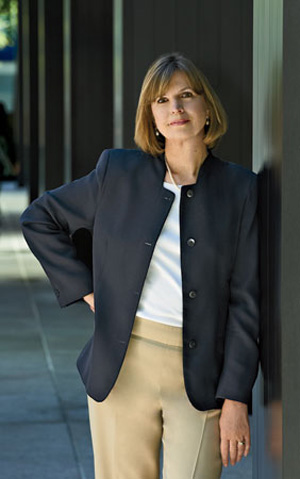Has the average new house changed since the recession—and what will the future look like?
It is April, and at Architectural Record, our thoughts turn to houses—the beautiful, innovative custom dwellings, featured in the pages ahead, where architects experiment with form and materials on a domestic scale and push design ideas in often radical new directions.

But before we get to RECORD Houses—and the best designs of the year—let's pause to look at the broader scene for quotidian residential building in the U.S. today. With the bursting of the housing bubble now behind us, and the economy continuing to brighten, has the residential market bounced back? Not quite, according to Dodge Data & Analytics, which predicts new housing starts will not return to pre-recession levels anytime soon.
But one aspect of the residential sector is growing: the average size of the new single-family house. It has reached an all-time high of 2,600 square feet, compared to 2,300 square feet 10 years ago. One big reason: there are more supersize dwellings than ever. Houses between 3,000 and 4,000 square feet now account for almost 22 percent of new construction, up from 15.6 percent in 2005, while houses of 4,000 square feet or more are now 9 percent, up from 6.6 percent in 2005. If you thought the popularity of McMansions was waning because of the subprime-mortgage crisis, think again.
A recent article on theatlantic.com looked at another surprising residential phenomenon: the resurgence of suburban sprawl. In Las Vegas, where housing was especially hard-hit in the recession, developers are pushing out into the desert again to construct new communities of thousands of high-end homes. Despite seemingly greater public awareness about sustainability and smart growth, many home builders believe the market is still strong for ever-larger houses in new developments, with longer commutes to city centers. Gas is cheap right now, so let's party like it's 1999.
But Architectural Record has been exploring the flip side of that trend in recent months, in a series of symposia focused on the rapid growth of multifamily housing in city centers around the country. Record on the Road, as we call these live events, has showcased the work of architects who are designing new buildings—or adapting old structures—to house the wave of Millennials and empty-nesters who want to live downtown in cities like Houston and Washington, D.C. These new urbanites are embracing density and mixed use. They like living near restaurants, cafés, shops, and venues for sports, culture, and entertainment. They want the option to walk, bike, or take public transportation rather than be totally dependent on a car. Houston added 20,000 units of multifamily housing last year, as did Washington, D.C.
For many of these enthusiastic city dwellers, owning a house is seen as a burden. While the baby boomers may migrate to the city to downsize, the generation under 35 often doesn't want to take on a mortgage or even a car. Their apartments can be small as long as they have plenty of urban places to hang out, work out, and socialize. The big question for the future of the single-family house—and the suburban ideal that often comes with it—is whether this cohort will want to raise their families as so many of their parents and grandparents did: with a house, and a yard, and a neighborhood school. Or will that version of the American dream slowly become obsolete?
There is, of course, another kind of dream house, unique and inventive, that is tailor-made for someone in the top 1 percent rather than purchased off the rack by those in the middle of the 99 percent. We admit that's what RECORD Houses usually are, no matter what the larger economic or social climate of the moment. These are designs to savor, and most of us will never get to live in places like them—though one featured in this issue is a pair of guesthouses in the Tyrolean Alps you can rent. RECORD Houses tend to be built, often as second homes, by adventurous clients who give their architects the opportunity to explore unusual materials and forms—and, importantly, to engage the specific context and natural surroundings of the site. This year's crop is especially provocative—just check out the mirrors and the curves. No, these places don't hold the key to housing society at large, but as works of architecture, they have the power to intrigue, inspire, and capture our imagination.



Post a comment to this article
Report Abusive Comment